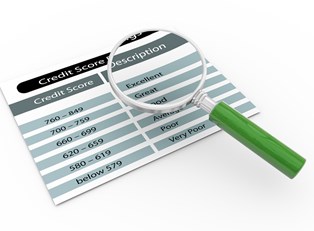You’re ready for your first credit card, but it seems like everyone is telling you to avoid them. In irresponsible hands, a credit card can be a lethal weapon. However, that doesn’t mean you should abstain from any sort of borrowing or credit account.
You’re more familiar with your spending habits than I am, but here are some ways to establish a good credit score from a clean slate.
Sign up for a secured credit card
Pros: Easy approval, interest rates not as high as retail cards
Cons: Requires a deposit, interest rates are higher than normal credit cards, additional fees
If you have a few hundred dollars available to apply for a secured credit card, they might be the option for you. After a year of timely payments, your record is reviewed and you may be allowed to upgrade to a bank’s regular credit card—and receive your initial deposit. Some cards allow you to earn interest on your deposit, so you end up with a little more than you put down. These cards also help folks with bad credit repair their credit score. Worst case scenario: you default on your payments and lose your deposit. Not a fan of annual fees or initial deposits? Try your luck with a student card.
Apply for a student-focused card
Pros: lower introductory rates, tend to offer sweet benefits and not carry annual fees
Cons: potentially difficult to be approved
Want to skip ahead to “real” credit card? College students may qualify for special cards directed to students. You’ll need to provide proof of enrollment in your application. You can electronically submit screenshots of your student record, class schedule, or transcript found on your school’s website. Interest rates may vary, but they tend to be as low as 16%. Here’s a perk you’ll enjoy: some cards forgive your first missed payment with no late fees. I have a student Discover It card that I applied for after responsibly using a retail card for a year. Like grown-up cards, I get cash-back bonuses I can use towards online purchases, paying off my balance, or deposit into a checking account. However, while student cards are easier to be approved for than regular credit cards, you might still be denied.
Start with a retail card
Pros: Easy approval, often yields reward coupons or discounts
Cons: A ridiculous interest rate that can screw you over if you overspend
This route isn’t for everybody! If you’re a shopaholic, I advise you skip ahead to the next option. Those who live the “treat yo self” mantra in moderation, read on.
Retail credit cards are a dangerous game. Their interest rates tend to start at 20%; a typical card’s rate is about 15%. However, it’s easier to be approved for a department store card, making it a viable option for those without a credit history. My first card was a GapCard with a $300 credit limit and a 24.99% annual percentage rate. I could only use the card at Gap or any of its sister stores, which worked to my advantage (no temptation to splurge at other stores). This was the only card I owned for a while. After a year’s time, I had a credit score of 740 and an updated wardrobe.
How I Did It
Frugality and a keen eye on the sales rack. Treat yo self…to a pair of $11 jeans once a month. Keep a low, manageable balance on your retail cards, and never miss a payment. If you’re approved and you don’t have a credit record, you’ll likely be given a low-limit card that can only be used at the store. Not necessarily a bad thing, if you exercise self-discipline.
You can find even more credit building tips at Earn Spend Live.





